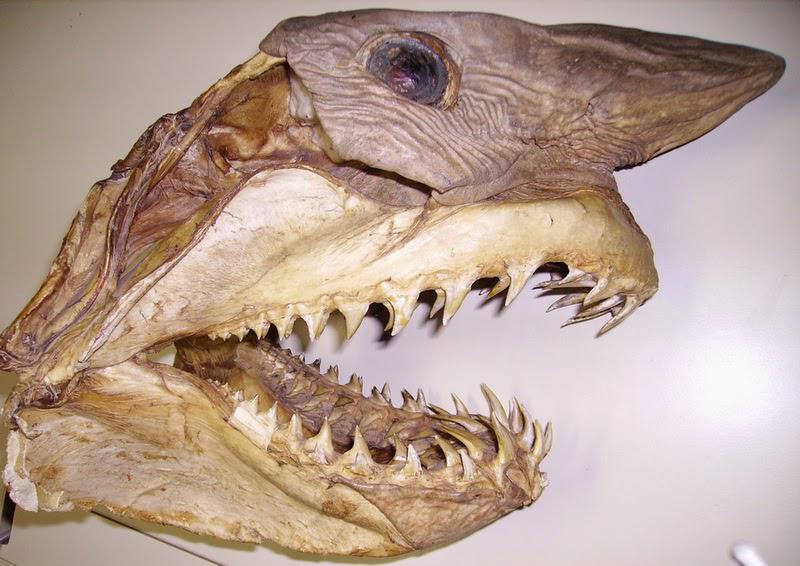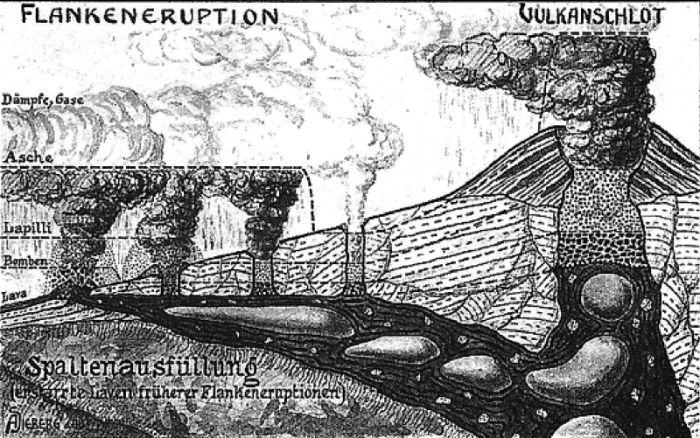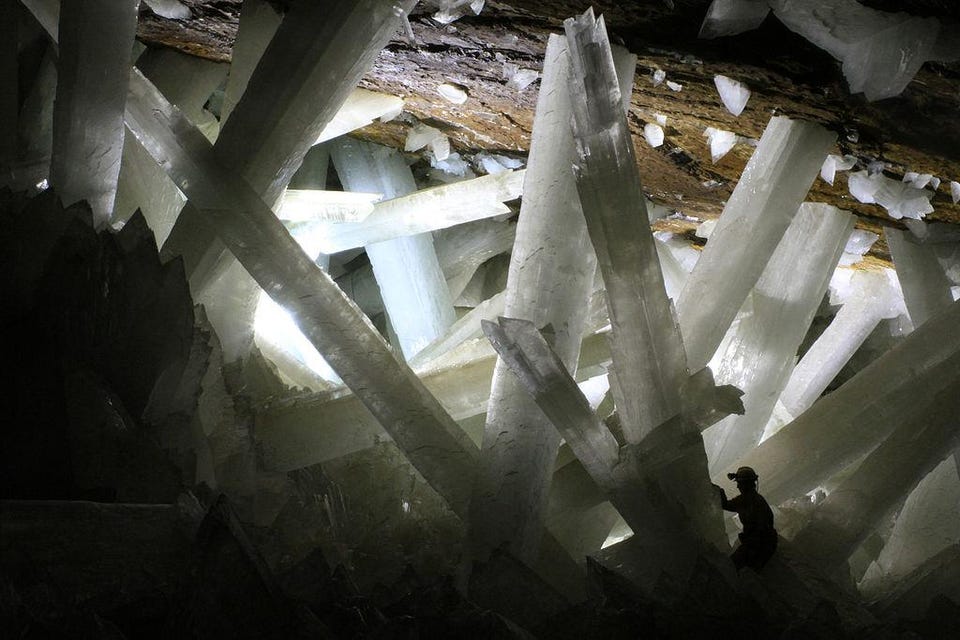In October 1666, a large shark was captured by a fishing boat in the sea of Livorno (at the time part of the reign of Tuscany). The animal was pulled onto the shore, beaten to death and dismembered. As the body was too heavy to be transported, only the head was saved. It was brought to Florence, where famous Danish anatomist and naturalist Niels Stensen (latinized Nicolas Steno) was asked to dissect the specimen.
Steno later published a detailed anatomical description of the shark, which included a chapter where he compared the shark’s teeth with fossils commonly found in the hills of Tuscany. The fossils of unknown origin were simply referred to as Glossopetrae or tongue stones.
Steno was not the first to speculate about an organic origin of fossils. In his 1565 book De Rerum fossilium, Lapidum et Gemmarum maxime, figuris et similitudinis Liber (On Fossil Objects), Swiss naturalist Conrad Gesner compared fossil sea urchins with living specimens, and argued that some fossils are petrified organisms. In 1616, the Italian naturalist Fabio Colonna argued that glossopetrae were shark teeth.
However, there was a big problem – they couldn’t explain how the supposed remains of sea animals could be embedded in rocks now parts of inland mountains. So most naturalists preferred to explain fossils just as curiously shaped inorganic features growing inside rocks.
Steno was the first to explain why fossilized teeth of a creature from the sea could be found inside rocks that were far distant from the modern sea. Before dissecting the shark in Florence, Steno had visited the Royal Danish Kunstkammer in Copenhagen and the fossils on display there. He wrote in a private note:
Snails, shells, oysters, fish, etc., found petrified on places far remote from the sea. Either they have remained there after an ancient flood or because the bed of the seas has slowly been changed. On the change of the surface of the earth I plan a book, etc.
During his travels in Tuscany, Steno had studied outcrops of layered rocks, and he had recognized that the sedimentary layers were petrified shores and marine sediment of an ancient, now vanished sea.
He also noted that fossils are found only in layered rocks and never in recent soils. If fossils were of inorganic nature, like many naturalists argued at the time, we should find them in every kind of soil and rock. By combining his observations in the field and the results of the shark’s dissection, Steno formulated a surprisingly modern geo-theory:
- The layers were formed by deposition in water. The now hard rock was once a soft mud.
- An animal living in the sea would, after its death, sink slowly into the soft mud. Mud and water would petrify the animal and preserve it.
- Collapsing cavities in earth´s crust would tilt layers along the borders of the forming crater upwards. Exposed to air the mud – with the fossils still inside – dries and becomes hard rock.
- Eventually the crater fills with water and a new layer is deposited above the old ones.
In the end, Steno argued, all the layers were uplifted again, this time high enough to form a mountain, where a curious naturalist can find the fossils eroding from the rocks. Unfortunately Steno’s work, like the work of many others before him, was soon forgotten and ignored.
In 1695, amateur physician and naturalist John Woodward published An Essay toward a Natural History of the Earth. This book, intended to prove the veracity of the Biblical account of a large ancient flood, was not well written and mostly based on work copied from other naturalists. Woodward argued that fossils are the remains of animals killed by a flood, and cited Steno to support this idea. However, reading Steno’s original considerations makes it clear that a single flood was not sufficient to explain the thick layers of sedimentary rocks found everywhere. Woodward’s book was therefore mostly dismissed by contemporary scientists, but it made Steno’s ideas popular again. Scientists then began to actively study and discuss sedimentary rocks and fossils – and the rest is history.
Used References:
KARDEL, T. & MAQUET, P. (eds.) (2013): Nicolaus Steno – Biography and Original Papers of a 17th Century Scientist. Springer Publishing: 739



